

Cash a burning issue
By Chris Gardner
Global Contracting
Solutions, the company behind plans to build a waste to energy incinerator in Te Awamutu is promising to pay its resource consent costs.
Following a three-week hearing, Environmental Protection Authority chief executive Dr Allan Freeth emailed 2173 submitters last Wednesday to say the incinerator application had been suspended because the applicant had failed to pay costs.
Ahead of The News going to press, payment had not been received by Monday afternoon.
Pressure group Don’t Burn Waipā submitted against the application during the inquiry in Hamilton in June and July and went public with the EPA’s announcement via social media.
At the same time, the EPA declined to discuss the issue and told The News to call back the next day.
Paewira waste-to-energy plant project director Adam Fletcher said on Friday he was aware of the EPA email and Global Contracting Solutions intended to settle its bill.
“We have been making regular payments to the EPA all the way through. We have always intended to settle the bill,” Fletcher said.
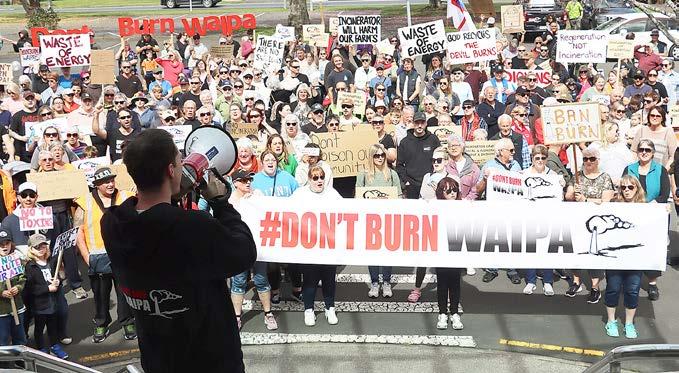
He said payments were not up to date because costs had doubled one month before the board of inquiry began into the application in June.
“We are a bit bemused as to why they chose to do this now,” Fletcher said. “We are only two weeks away from the decision. It seems a bit non sensical.”
The cost of the application was confidential, Fletcher said.
EPA senior communications advisor Julia Scott-Beetham said the application was still




suspended on Monday.
“Once full payment of all outstanding costs has been received, the EPA will notify all parties and resume processing the application,” she said.
Fletcher refused to discuss a further $40,665 outstanding resource consent processing costs owed to Waipā District Council since April 2024.
The application initially went to the council, before being called in to an independent board of inquiry by minister for the environment Penny
Simmonds.
Under the Resource Management Act, the EPA may suspend the processing of consent applications if costs are outstanding, until payment is made in full.
Freeth said the suspension would pause all statutory processing timeframes, including the August 28 decision date.
“Due to the process being suspended, this decision due date will no longer remain valid. If processing is resumed, we will provide an updated date, in line
with the remaining statutory timeframe, in which the board of inquiry must make a decision.
“If the applicant subsequently pays the costs recoverable by the EPA, we will lift our suspension on processing their consent application.”
Waipā District Council and Te Awamutu and Kihikihi Community Board were among submitters on the plan, the vast majority in opposition.
The EPA’s decision to suspend the application came
as a
“It is entirely reasonable that the applicants are required to pay first before receiving the ruling,” Titchener said.
“The issue is that there is a considerable amount of anxiety in the Te Awamutu and Kihikihi District because we were close to having certainty about the application. People’s lives, and in some cases businesses, have been put on hold. This delay is just another hold up.”
Cantlon said the decision had been anticipated in the next two weeks ”and to now be thrown into a state of limbo has been very disconcerting”.
“We had been planning to have a community event to acknowledge the board of inquiry’s decision, but this is now on hold.”
Cantlon said the group had asked the EPA whether there was a statutory limit on how long the application could stay suspended.
“This process has been underway for nearly four years, and the final decision was only two weeks away, having the process stopped like this is very unsettling to the local community who would like certainty by way of a decision.”








shock to board deputy chair Kane Titchener and Don’t Burn Waipā spokesman Nick Cantlon.
Lobby group Don’t Burn Waipā – this photo comes from our files - was telling supporters about the Paewira application being suspended –while the EPA was telling The News to call back the next day.

Letters…
The ramp saga













CONTACTS
News/Editorial
Roy Pilott editor@goodlocal.nz
027 450 0115
Mary Anne Gill maryanne@goodlocal.nz
021 705 213
Viv Posselt viv@goodlocal.nz
027 233 7686
Chris Gardner chris@goodlocal.nz
027 231 7007
Advertising Director
Janine Davy janine@goodlocal.nz
027 287 0005
Owner/Publisher
David Mackenzie david@goodlocal.nz
Office/Missed Deliveries
07 827 0005 admin@goodlocal.nz
I have worked as an economist most of my life so I am very used to looking at and using statistics. But I am also a great believer in using observation and common sense when examining statements from people that call themselves experts if their statements don’t reconcile with common sense.
Apparently the Transport Minister, Chris Bishop, has been told recently by NZTA officials that there had been ‘no significant change’ in the demand or need for an on-off ramp at the southern end of Cambridge since the Waikato Expressway Cambridge section design was finalised.
That date was 2013 – 12 years ago. You don’t have to be a traffic engineering expert to know that that statement cannot possibly be true. You only have to look at the data for the growth of Cambridge and its surrounds over that 12year period and observe the amount of traffic, including large trucks, trying to get through Cambridge today compared with twelve years ago.
I can’t imagine what data the NZTA officials used to conclude that there has been ‘no
Let’s reclaim the heart of democracy: not as a battleground, but as a workshop where every resident can help craft the futurepolitely, persistently, productively. •
significant change’ in the demand or need for this on-off ramp. The statement defies common sense and observation. When that happens, my experience has taught me to look again at the data being used.
Also, policy decisions like this shouldn’t only be decided by looking backwards. The NZTA officials and the transport minister should also consider what is likely to happen to the demand and need for this on-off ramp over the next few years. Given the strong growth predicted for the Cambridge area you don’t have to be a traffic engineer to know there is only one direction this demand and need can go – up.
Peter Nicholl
Cambridge
Māori wards
I grew up in Te Awamutu and moved to Cambridge at 12. Waipā has been home for most of my life. Cambridge was small back then. Yes, the cliques and the wealthy walked among us, and there was a snobbishness about who lived “over the bridge” (IYKYK – if you know you know), but in a fairly harmless way, because it still felt like a community.
with Senior Constable Ryan Fleming
Taking meaningful action
In recent months, Waipā District Council offices, particularly in Te Awamutu, have seen a troubling uptick in aggressive behaviour— from snide phone calls to menacing in-person confrontations and social media vitriol.
Our mayor has had a member of her family followed. The spike in hostility prompted the council to install a new security grill and duress alarms at reception. What was intended as a welcoming public space has become a place of guarded caution.
Why are things deteriorating? The same places that should foster community trust instead now brim with tension, suspicion and, at times, outright hostility. Too often, “making your voice heard” devolves into shouting threats rather than crafting solutions.
It’s one thing to feel unheard - especially when decisions about development, representation, or resource allocation strike deep personal chords. But threats do nothing to solve underlying frustrations. They erode trust, alienate good-faith actors and breed defensiveness rather than understanding. Instead, imagine if that energy were rechannelled toward meaningful action like this...
Show up and participate. Waipā residents have the power to make their voices heard by attending council meetings, joining public consultations, or applying for seats on committees. Want better transport, more diverse representation, or thoughtful environmental planning? Open the door—

When I look at the candidates for our upcoming local elections, I don’t see myself in most of the faces on the page. This isn’t shade on the candidates – they’re all putting themselves forward in service to our community. I’m simply stating a fact. There are no Māori standing for mayor or general wards this election, just one for the community board and two for the endangered Māori ward seat. We need all three of their voices on this council. People sometimes say, “there’s nothing stopping Māori from running in the general wards,” but history shows otherwise. Māori candidates face systemic barriers and are almost always outvoted by the majority.
Māori wards exist to ensure Māori actually have a voice at the table, not just the right to try. This isn’t about “special treatment”; it’s about fair representation in a system that has never been a level playing field. Māori wards help guarantee the perspectives, priorities, and aspirations of tangata whenua - the people whose land we are all on - are heard where decisions are made.
don’t slam it shut.

Build coalitions, not walls. Pool your concerns with other community members who share them. Collective advocacy can turn isolated frustration into persuasive force. One angry person is easy to ignore; a united, wellorganised group is hard to dismiss.
Use formal channels. Disagree with rates rises, ward boundaries, or planning decisions? Submit formal feedback. Request meetings with councillors. Write to local media. These steps may take time, but they matter—and they build credibility.
Be visible, be constructive. Public demonstrations, petitions, or letters to the editor are more effective when accompanied by clear, actionable proposals. Critique policies—but pair criticism with alternatives.
Waipā is growing—infrastructure, housing, tourism, representation. That growth needs to be paired with civic energy, not hostility. When residents direct their energy into co-design—not confrontation—we help build resilient systems that reflect all voices. Imagine a robust civic culture where disagreements are hashed out in the council chamber, not through threats or fear.


Many who now live in Cambridge came as manuhiri (guests) to the district and/or to Aotearoa New Zealand. That should be recognised. At the same time, Cambridge’s Māori population falls well below the national average. Living here, I’m aware even my use of kupu Māori (Māori words) in this letter will trigger some people in this area, and that says a lot about why the Māori ward matters.
We need to keep Waipā Māori, the Māori ward. It’s a small step towards a council that truly represents all of Waipā. Instead of asking why Māori should have a place at the table, maybe the real question is: why wouldn’t we want that voice included?
Maria Low (Te
Arawa)
Leamington
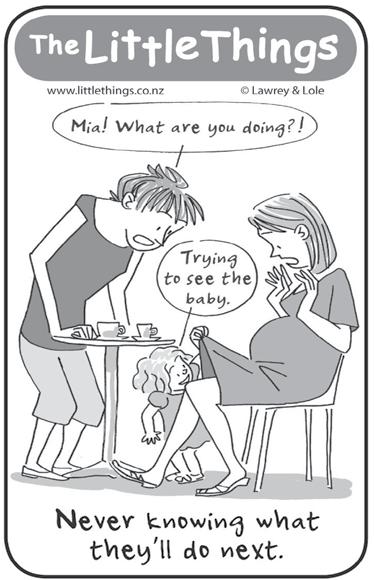


Lake lowered
The annual lowering of Lake Karāpiro takes place on Saturday from 8am to 5pm to allow for maintenance and cleaning activities around the lake. Lake users and Mercury Energy will have their eyes out for the invasive freshwater clams, first discovered at Bob’s Landing two years ago.
Numbers up
Staff numbers at Waipā District Council had risen from 222 in 2016 to 332 by last year. As of mid-June this year, the full time equivalent count was 343 staff. The council’s capital spend nine years ago was $43.6 million compared to $158.4 million last year. Infometrics figures show the Waipā population grew from 52,000 to 61,400 at the same time.
Commuters rise
More than 22,000 workers commute to Hamilton for work daily, Statistics NZ data shows. Data captured on Census night in 2023 reveal about 22,100 people commute into Hamilton for work, while 13,100 travel outside the city for employment. More than 83 per cent come from neighbouring Waikato and Waipā districts. Inbound commuters most commonly work in healthcare, manufacturing, and construction.
Survey workshop
Waipā District Council staff will present councillors with the latest Annual Residents Perception Survey for the year next month at a workshop. The survey’s main objectives are to test residents' perceptions around the environment and lifestyle associated with Waipā district, satisfaction with council services, leadership, financial management and value for money.
Wrong William
Waipā councillor DaleMaree Morgan’s great great grandfather William Tregloan Thomas was mayor of Woolston in Christchurch and not the sculptor William Thomas Trethewey (The News 14 August).
Op shop saints honoured
By Viv Posselt
St John members from around the district were celebrated at Sunday’s Waipā and King Country Service Awards ceremony in Te Awamutu.
Recipients were commended by Waipā mayor Susan O’Regan for their years of service to St John. “It is a wonderful privilege to be here to acknowledge your remarkable service.”
She said the awards represent more than just time served, but also countless hours given freely, shared compassion and a steady commitment to community.
O’Regan made special mention of the Te Awamutu Op Shop which is marking its 10th year in town, commending those involved for their loyalty and hard work.
She said the service it provided to the community, ‘in terms of the circular economy and helping
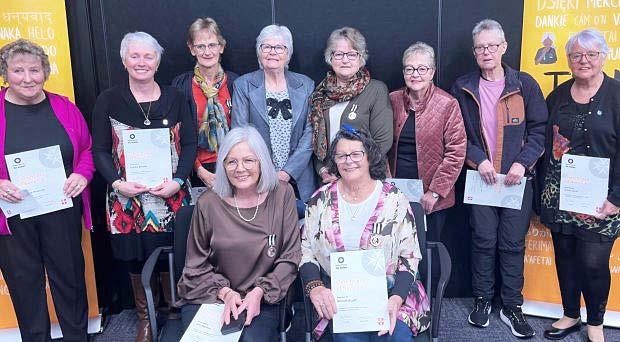
prevent waste going into landfill’, was invaluable. The annual awards acknowledge service given to the Order of St John, both paid and voluntary, and 2025 recipients came from Te Awamutu, Te Kuiti, Ōtorohanga, Cambridge, Putaruru and beyond. Presenting them was Gary Salmon, who is chairperson
of the Central Region Trust Board and chair of the Regional Honours Committee.
After a welcome by deputy chairperson of the Te Awamutu Area Committee and Waipā King Country Regional Board member, Richard Hurrell, guests were addressed by Ross McGowan, chairperson
It’s a warmer
By Jesse Wood
A brick welcome sign (pictured) on Ōhaupō Road in Te Awamutu, stating “Welcome to Te Awamutu, the Rose Town”, has had a much needed “zhuzh up”.
The sign, designed by Gilman Partners, was presented by the Waikato Dairy Co-Operative to the borough of Te Awamutu in about 1984 to celebrate 100 years of local government.
The Te Awamutu Community Board investigated options for more than a year before deciding something needed to happen to bring life back to the structure. In September, the board allocated $1725 for a spruce up.
The four Te Awamutu service club badges were updated – Altrusa, Kiwanis, Lions and Rotary – and a colourful rose themed painting added.
The faded badge from the now defunct Te Awamutu Women’s
Institute was removed.
Board member Jill Taylor said other service group badges can be added, but that quartet are the only current ones known to the board.
“When I approached Rosebank Art Centre, I said we’ve got to remember Te Awamutu is still the rose town of New Zealand, so Maryanne WolterPryke did some beautiful artwork.”
Te Pahū-based Wolter-Pryke teaches decorative art at the centre and attends classes weekly.
The Te Awamutu Menz Shed got their tools out to make a frame for the art and Viking Glass donated unbreakable glass to finish it off. Mitre 10 Mega Te Awamutu donated the ground camellias to put alongside the roses in the brick garden box below.
The community buy-in has seen a “zhuzh up” of several signs at Te Awamutu entry points.
“Our first focus was the brick sign, because it’s probably the biggest
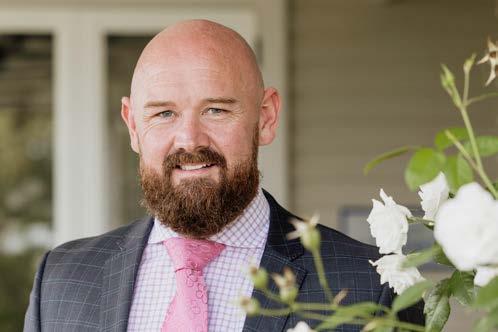
of the Te Awamutu Area Committee.
He also commended those involved in the running of the Te Awamutu Op Shop, and said the outlet had contributed $2.8 million to St John and the local community over the 10 years it has operated.
“There have been around six staff volunteering their
time each day, amounting to 64,700 hours over 10 years. It’s a great facility for St John and for our community.”
Thirty-eight members were recognised with a service certificate and badge for having completed five years’ service with St John. The Service Medal of the Order, awarded to those with 10 years’ service, was presented to 22 recipients, seven of them involved with the Op Shop since it started.
Seven members were recognised with their first bar to the Service Medal for completing 15 years’ service and eight were recognised with their second bar for 20 years’ service.
Two members, Sharon Abernethy of Te Awamutu and Nita Brown of Taumarunui were awarded a third bar for 25 years’ service. Nita has since left St John and was not present at the ceremony.
A further two staff were recognised for 30 years’ service with their first gold bar.
welcome
one,” Taylor said.
“We did that, but then there were the town entrance signs on Cambridge Road and Kihikihi Road
that needed to be updated too. They now have new signs where needed and have been water blasted. They look great.”
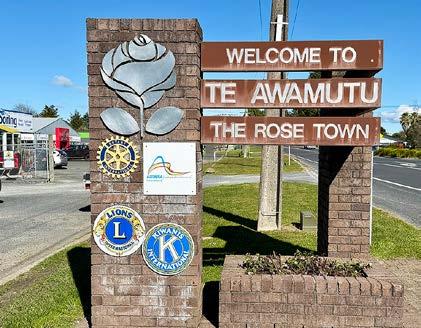
Rosetown Funerals
Funeral Director: Jordan Goss
The Te Awamutu Op Shop team - back from left, Christine Peterson, Sandra Breedt, Sharlaine Marshall, Gail Corboy, Jan Balsom, Ces Heron, Sondra Cleaver and Lynne Levis. Front, op shop manager Jan Hoskin, left, and Michell Bluett. Photo: Viv Posselt
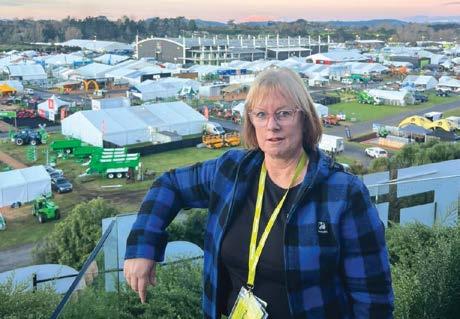
“I’m so proud of New Zealand’s agricultural credentials which are fully on display throughout the country at the Fieldays and local A&P shows.”
Navigating Tariffs: A Perspective
by Barabara Kuriger, MP for Taranaki-King Country
Success doesn’t always have its rewards.
That is the perception some may have at the imposition by the USA of a 15 per cent tariff on New Zealand exports, while some of our principal trading partners, such as Australia and the United Kingdom, get only a 10 per cent tariff. The rationale for our higher tariff, we are told, is that, unlike Australia and the United Kingdom, we export more to the United States than we import. One way of looking at that, somewhat to our disadvantage, is that we, and I mean mainly our primary industries, are more successful at exporting and possibly have better products than those two countries and other countries that have secured lower tariffs.
And I think it’s going to stay that way, and here’s why: we produce a premium product; in the case of red meats, wool and wine, probably among the best in the world.
Yes, we may see a downturn at the lower end of the U.S. market, but at the higher end—the premium end—I think we will hold our own because those who appreciate quality will be, as they are now, prepared to pay for it. Those people know that New Zealand produces some of the best food and wine in the world. Our farmers and vintners do us proud. And while they maintain their quality output, that will be our main hedge and protection from that higher tariff. In a related vein, I was intrigued to learn about a new book titled “The Have and Have Yachts” by Evan Osnos. The book discusses the growing discontent among America’s affluent elite with the current socio-political climate, leading many to seek alternative places for living and investment. Notably, New Zealand is increasingly becoming their destination of choice, valued for its green landscapes and pristine environment. In conclusion, while the tariff may present challenges, I am confident that New Zealand’s exceptional reputation and quality products will enable us to navigate these obstacles successfully.





When anthrax struck
By Meghan Hawkes
When some of Mr Storey’s ‘turnip’ cattle began dying on his Te Rahu farm in June 1902, there was the uneasy thought that perhaps it was anthrax.
This serious disease caused stock to die suddenly and cases in New Zealand were suspected to be caused by using imported bone meal fertiliser which hadn’t been sufficiently sterilised. The fertiliser was assimilated by crops and grass which were then eaten by cattle, pigs and sheep, infecting them.
Mr Storey enlisted the help of two other men – Mr Ward and Robert Cunningham – to skin the first cow which had died. Subsequently more cattle perished and Mr Storey informed Mr Ross, stock inspector, that he appeared to have an outbreak of anthrax.
When Mr Ross questioned Mr Storey, he learnt that he had a lesion on his arm. Dr Brewis was called in and immediately performed an operation, after which Mr Storey was taken to hospital. He was followed the next day by Mr Ward. Microscopic examination of slides taken from both patients showed unmistakably the bacilli of anthrax. Robert Cunningham was admitted to the hospital in a critical condition. The doctors held no hope for the 63-year-old’s recovery.
Alarmed headlines appeared in newspapers but only meagre details were available, Health and Stock Department officers and hospital authorities being tight lipped on the matter.
There had been two anthrax outbreaks in the Waikato up to 1902 – one in Tamahere the year before and one in Ōhaupō in 1895. Animal post mortems and pathological specimens confirmed definitively this outbreak too was anthrax and bone meal manure concluded to be the cause. Six cattle had died while feeding on turnips but every
precaution was taken to disinfect the locality of the outbreak and stock deaths ceased.

Inquiries at the hospital revealed that Mr Storey and Mr Ward were progressing satisfactorily, and Robert Cunningham was somewhat better. He was surprising everyone by his tenacity. Dr Douglas attended him day and night, taking the greatest interest in the case.
Cunningham was a pioneer settler and had served with Von Tempsky’s Forest Rangers and Major Jackson’s cavalry troop, seeing a good deal of service. He and his wife Mary had several children, one a son who had died 20 years previously at the age of 16.
Cunningham was a popular man, very highly respected. His health had improved considerably since his admission to hospital and his friends and family were hopeful he would recover. On a Sunday less than two weeks after becoming ill he appeared well while speaking to the matron, but soon afterwards he died. Death was found to have been caused by syncope, the result of exhaustion from anthrax poisoning. Cunningham’s funeral was largely attended. He was buried at St Paul’s churchyard, Te Awamutu, where his headstone is inscribed ‘Erected by his neighbours and friends as a mark of their esteem of his many sterling qualities.’
At a July meeting of the Waikato Farmers’ Club the sad death of Cunningham was referred to. He had been known to club members for over 40 years and had not a single enemy. The district could ill afford to lose a settler of his stamp, one who was ever willing to assist a friend or neighbour.
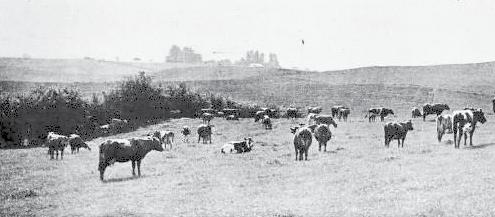




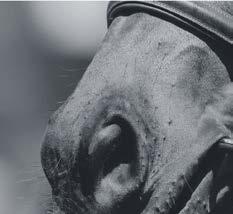
Your trusted local supplier of premium feed for horses, livestock, poultry, and pets. From tailored equine nutrition to everyday farm and pet essentials, we’ve got everything you need. Quality products, expert advice, and friendly service.
The same quality service and products just a new and improved location!


A dairy herd at Te Awamutu pictured soon after the turn of the century.
Butchery teams meat at top
By Jesse Wood
Te Awamutu butchers have again featured at the national awards.
Brendon Alexander, Callum August, Cody Burbery, Brad Gillespie and Adrianna Te Aonui represented Te Awamutu on the New Zealand stage on the North Shore last week.
Alexander, August and Gillespie – the stickmen from Te Awamutu Pak’n Save –were first equal in a tough fought in Master Butcher Teams Challenge.
The stickmen team also took out the Beef and Lamb New Zealand ‘Best Beef Product’ with their Brisket Jalapeño and Cheddar Truffles.
The teams challenge brought together seasoned professionals to assess their speed,
technique and teamwork.
“There was no qualifying for the teams’ master butcher competition, you just had to register a team of three qualified butchersthe competition was tough,” Gillespie said.
“The skill set in each team was extremely high.”
The four competing teams had two hours to break down a full lamb and a beef hindquarter, displaying their craft and creativity.
In the end, the stickmen couldn’t be separated from the Australian Black Gloves crew.
“The Australia team was made up of three butchers from their national butchery squad who came third in the world butchers challenge in France,” Gillespie said.

“To come first alongside them is massive achievement.
“It was Brendon and Callum’s first national competition so they still can›t believe what they achieved.”
Teams’ challenge head judge Riki Kerekere said overall, it was the highest standard he’d seen delivered.
“Normally in these competitions, you might see one team, maybe two that stand out – every team stood out,” Kerekere said.
“It was great having an Aussie team competing, we know what the Trans-Tasman rivalry can do to lift performance, and we saw that today.”
New World Mt. Maunganui representative Alex Pellow pipped Burbery in the butcher apprentice finals. The Te Awamutu rep was runner-up.
Burbery had beaten the champion in the regionals earlier this year.
The pair have been competing and learning for the past three years, creating a great rivalry.
“It was an exciting journey to get where I got to, through hard work and passion,” Burbery said. “Having a great support network from Pak’n Save meant I could put my best foot forward and compete at a high level.
“It was great to see Pak’n Save TA compete several categories and get some “chocolates” at the end, and give the Aussies a run for their money in the team’s event”
Te Aonui was in the young butcher finals alongside five others from across the country.
The contestants echoed the great support they had from their Te Awamutu employers.
Regional council’s conference cost
By Mary Anne Gill
Two Waikato regional councillors and chief executive Chris McLay attended the recent Local Government New Zealand (LGNZ) conference in Christchurch.
The council was a member of LGNZ at the time of the conference because even though they had voted to leave the organisation, there was a notice of motion signed by a majority of councillors proposing to revoke the decision.
Councillors Robbie Cookson and Warren Maher were also scheduled to attend but withdrew. However, because their tickets were non-refundable, the council still had to pay $3300 for their unused spots.
The bookings to attend the conference were made following a council decision in
March, three months before councillors voted to leave LGNZ. In total, the conference cost the council $12,084.89, covering attendance by Angela Strange, Tipa Mahuta, and McLay.
This month, the council voted to rejoin LGNZ - on the casting vote of chair Pamela Storey.
Taxpayers’ Union investigations coordinator Rhys Hurley criticised the spending, calling it “outrageous.”
“If councillors make the right call and walk away from LGNZ, they shouldn’t send ratepayers the bill for one last junket,” Hurley said.
“LGNZ has shown time and time again it doesn't have the best interests of councils at heart. Waikato should have stuck to their original decision and stayed well away from the failing organisation.”
















The Pak’n Save Te Awamutu Stickmen during the master butcher teams challenge – from left, Callum August, Brad Gillespie and Brendon Alexander. Photo: Retail Meat NZ
men in business
DR. CHRIS PRUET
Innovative Glaucoma Specialist now in Cambridge
Dr. Chris Pruet is a glaucoma specialist who uses the latest proven technology to safeguard your sight for a lifetime. If you have a family history of glaucoma, are curious about what eye surgery is suitable for you, or would simply like a comprehensive eye check, book a consultation now to protect your sight. He makes it a priority for his patients to be seen promptly.
Q: What makes your approach to glaucoma treatment different?
I specialise in advanced laser and surgical techniques that are safer and offer quicker recovery than traditional surgery. These procedures enhance the eye’s own drainage system to lower its pressure. The entire purpose of this is to protect your optic nerve from damage, ensuring your vision is outstanding and remains that way for the rest of your life. I value your time, which is why I am equipped to perform vision-preserving laser therapy in the same visit as your initial consultation.
Q: What new treatments are you offering?
I am committed to using the latest, safest medical advancements for my patients. As a prime example, I’m proud to be the first surgeon in New Zealand offering a procedure called High-Frequency Deep Sclerotomy that is widely used overseas. This state-ofthe-art Swiss technology is a gentle yet highly effective new way to lower eye pressure, and it’s just one of the many advanced, proven treatments I use to give my patients more options to safeguard their sight for a lifetime.

Q: What is your philosophy on patient care?
My priority is you. I listen carefully to your needs to create a plan that fits your life. My role is to be your expert advisor, but you are always in charge of your health decisions. Part of this commitment means being responsive; I can arrange surgery at short notice if required to ensure we act at the most crucial time to protect your vision. Invest in a Lifetime of Outstanding Vision
Your vision is precious. Take the first step towards protecting it for the future. Book a priority consultation with Dr. Pruet today to discover how modern treatments can help you maintain outstanding vision for life.
Call 07 242 0877
Clinics in Cambridge and Hamilton brighteyes@eyesurgeons.co.nz
Racing this time...
By Peter Carr
The names are in. The aspirants are known for the 2025 Waipā Council Steeplechase. Yes, that three-yearly event where experience and wannabees go head-to-head to attract your attention.
In Cambridge three sitting councillors seek a return to the big table, one as mayor. They will expect searching questions as to their recent governance - and rightly so. Perhaps, when you get the opportunity, seek the stance they took when the $50 million poorreturning ‘investment’ was put in place. Seek their stance at the time to the purchase of the ex-Bunnings store in Te Awamutu now sucking life out of the council’s coffers. Seek their views on the staff numbers increase over the last nine years.
With regard to the last item the (relatively new) council chief executive has put together a context report setting out the increases against annual spend of the council. It includes the transfer of accountability from central government to local bodiesrightly or wrongly, and the major growth of new dwellings to balance the demands of the attractiveness of Waipa. That said, to what extent did the current elected people measure, challenge and rail against some of the perceived excesses?
A writer to this paper last week highlighted a growth of ‘closed door meetings’. A long-standing councillor (again in last week’s paper) called for greater transparency and accountability for decisions. Whose decisions? Those of the currently elected governance group or those of the organisation’s staff? Another aspirant with regional council experience stated that the council has lacked sound planning and financial governance.



This is the loony warm-up period when aspirants use their words and elbows to get to the front row of the steeplechase field, hoping they will not be caught up in the hedges and hurdles and have enough energy for the final sprint down the straight.
You have the chance to challenge them - to seek their skill level and, more importantly, their governance experience. Clearly several are thin on the latter. But it is their right to stand. Currently there are two major Cambridge meetings ahead being the Grey Power (August 28) and the Cambridge Chamber of Commerce (suggested as members only) Town Hall gathering on September 4. The candidates have publicly announced their email and telephone numbers – take a look at the website of ElectionNZ and source the Waipa list. They all want to hear from you so why not make use of this opportunity?
Ask yourself about the suitability of aspirants, who do you want to curb the rapidly spiralling rates increases? Who do you want to ensure that the land for the third bridge is a practical and, very importantly, early decision? Who will serve you with sound, transparent and sensible board table challenges, measurement and accountability?
You only get one chance at this, and you only get that chance if you actually vote. If you ignore or abuse that right then you have only a thin chance of effecting balanced democracy.






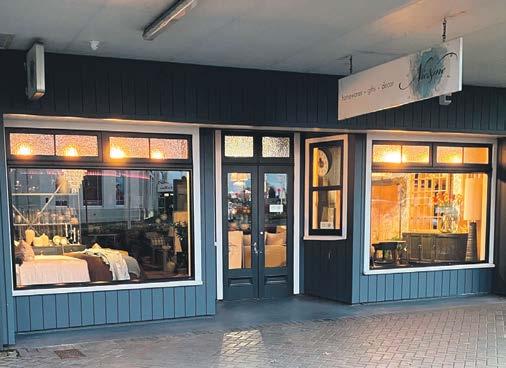
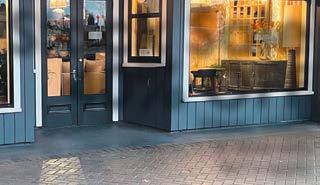


DR. CHRIS PRUET
Councils reveal election costs
By Mary Anne Gill
The 2028 local body elections could be run by the Electoral Commission if wide-sweeping changes recommended by a Local Government NZ electoral reform working group are adopted.
But for this year’s election, two private companies are running the show on behalf of councils: ElectionNZ. com, which is overseeing 54 elections including Waipā, Waitomo and Ōtorohanga; and Election Services, which is managing 22, including Hamilton and Waikato.
In the last election, each vote cost Waipā ratepayers $9.23, paid to the Christchurch-based ElectionNZ. That figure looks set to remain unless the council’s own advertising campaign delivers an unexpected surge in voter turnout.
Waipā has budgeted $284,000 for the 2025 local elections — not including staff time, salaries, or overheads. Of that, $239,000 will go to ElectionNZ.
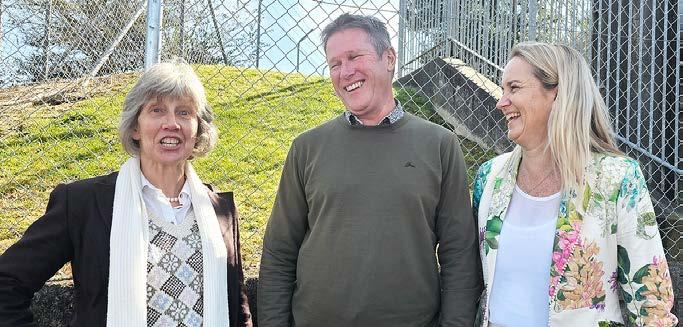
The remaining funds will cover advertising and marketing, materials and services, training, and catering.
Of the $30,598.60 allocated to advertising and marketing, most is going to a national media company as part of a digital advertising package that also included print ads in the now-closed Cambridge Edition community newspaper.
Meanwhile Ōtorohanga has budgeted $51,000 for ElectionNZ and $3000 in
King Country News.
In Waitomo, the council has budgeted $72,000$27,000 of it to ElectionNZ
– the rest in King Country News, the council’s own community newsletter and about $600-$700 on radio.
Digital media costs for both councils are free and provided on their websites, Antenno and social media channels.
The News has requested a breakdown of the Waipā

advertising spend under the Local Government Official Information and Meetings Act (LGOIMA) — information the council has already provided to others and which has been shared publicly.
The council has yet to decide whether the portion of the advertising budget previously allocated to the Edition will be redirected to other print outlets or used for additional digital advertising.
Good Local Media editor
Roy Pilott said Good Local Media was the only media which has consistently scrutinised the council over the last three years, and reader knew it. He said it would seem rather strange if the council did not regard The News as an obvious choice for advertising.
“It’s thanks to our other advertisers – who support us week after week – that we are able to provide the coverage

we do. It will be interesting to see how the council finally cuts its advertising cake.” Side by side
Susan O’Regan, Mike Pettit, and Clare St Pierre have sat around the Waipā District Council table together for the past six years - but that’s about to change.
All three are standing for mayor. O’Regan and Pettit are making all-or-nothing bids, while St Pierre is also contesting the PirongiaKakepuku ward seat she’s held since 2013.
Her chances of retaining it are strong. She’s up against Better Waipā’s Les Bennett, who lives in Karāpiro, and Ngāhinapōuri resident Naomi Pocock. Bennett may have hurt his chances in the parochial ward by also standing for the Maungatautari Community Board - on the opposite side of the district.
Between now and election day, the three mayoral candidates will appear at various functions and debates, making their case to voters.
We wish them all good luck - and a clean fight.

Catching up at Karāpiro: from left, Clare St Pierre, Mike Pettit and Susan O’Regan at the community celebration.
Photo: Mary Anne Gill
Gravity at work
By Janine Krippner
I am undertaking the brutal adjustment of coming from the oppressive, dusty heatwaves in Spain to mid-winter New Zealand - going from long, sunny days on the islands to frosty mornings.
Several weeks ago now, once the students had returned home and our projects were wrapped up, my focus shifted from volcanic resilience on Tenerife to the westernmost island of the Canaries, El Hierro. I travelled there by ferry with colleague Sergio Alfaya to investigate rockfalls following our month of work with GeoTenerife. I had written about his research a few weeks earlier, and now it was time to see the geology for ourselves.
El Hierro took my breath away. Much of its northwest coast is dominated by an immense cliff that rises around a kilometre above sea level in an astonishingly short distance, exposing countless stacked lava flows. Above, the surface is dotted with scoria cones and younger lava flows, with more than 500 craters mapped across the island. The landscape is so spectacular that the entire island has been designated a Unesco Global Geopark.
It is also volcanically active. In 2011, a seismic crisis shook the island, culminating in a submarine eruption. The uncertainty over where the vent might open caused major disruption for residents, providing lessons that later proved invaluable during the 2021 Tajogaite eruption on neighbouring La Palma.
Steep volcanic slopes and sheer cliffs make El Hierro especially prone to rockfalls. These range from minor tumbles to significant road-blocking events. Local authorities are so familiar with the hazard

that debris is cleared with remarkable speed. Driving around, we saw patches of concrete where heavy rocks had punched holes in the road surface.
At one point we entered a stretch of road that was marked by a large yellow sign stating “Danger, landslides. Go on at your own risk”. Above the road were tall fences set to catch falling rocks, and at the most dangerous spot, a tunnel has been built for rocks to cross.
Evidence of gravity’s relentless pull was everywhere: broken blocks of ancient lava littered the slopes, and one fence, several metres high, bore a deep dent from a boulder that had bounced its way downhill before smashing into the barrier. We didn’t linger in that section.
The scale of rockfalls and landslides is immense, from handfuls of fist-sized rocks scattered across a neighbourhood road to giant scarps carved by catastrophic events that sent debris far out to sea. In fact, around half the seafloor surrounding the island, extending out to 60 km offshore, is covered in landslide deposits. Over the past 200,000 years, four giant landslides have stripped away roughly 10 per cent of El Hierro’s land mass. Thankfully, these massive collapses are rare compared with the smaller, but still dangerous, events that occur regularly.
We all live with our own geologic hazards but seeing them so starkly on an island of just 11,000 people was a powerful reminder of how closely some communities live with the forces shaping our planet.
Highlighting our fortune
By Julie Guest, St John’s Church, Te Awamutu
Last week’s Te Awamutu News had two stories that seemed to sit alongside each other. One was the story by Mary Anne Gill covering Waipā’s latest citizenship ceremony. One hundred and eight people were made New Zealand citizens, some of whom have been in New Zealand many years. The article also stated that over 1000 people have been made New Zealand citizens in Waipā over the past three years. That is a lot of people choosing to become New Zealanders.
This made me wonder, what is it that motivates these people to throw their cap in with us? Our news seems to be all about the lack of quality of life in New Zealandhigh cost of food, increasing rates, lack of affordable housing, poor access to health care and stretched resources for schools, police and agencies that help us care for each other.
Then I noticed the comment by our Te Awamutu Community Constable, Ryan Fleming. He was writing about the policing Prevention Team in Waipā, explaining that there are three roles: Youth Aid Officer, School Community Officer and Community Constable. Ryan pointed out that these three people work closely together, combining knowledge and skills to bring about the best outcomes for everyone, with a focus on supporting and steering people away for criminal activity.
Also in the media this week is the story of “Mamma Ghee,” who has gone from three terms in prison and a methamphetamine addiction, to someone who is about to fight in a charity boxing match raising funds for suicide prevention.
These stories sit in contrast to the overwhelmingly negative picture we are
often painted about New Zealand.
Perhaps we don’t recognise how much we have going for us. I’m not downplaying that things are difficult for many people at present, but it seems New Zealand still is a place where opportunities exist.

It seems to me that the cooperation between the Crime Prevention Team is a picture of the best of attitudes we have in New Zealand.
As a country we still believe that everyone deserves a chance to become all that they were created to be, and that every one of us can offer that opportunity to each other. As the saying goes, “cooperation is the thorough conviction that nobody can get there unless everybody gets there.” (Virginia Burden).
This belief that everyone deserves a chance reflects something deeper – the Christian conviction that all people are created equal and created to be loved.
This isn’t just policy or political rhetoric; it’s at the heart of what makes communities thrive. When we see each person as having inherent worth and potential, we create the kind of society that attracts new citizens and transforms lives like “Mamma Ghee’s.”
Churches throughout Te Awamutu embody this belief, opening their doors to anyone seeking community, purpose, or simply a place to belong.
These congregations invite all who want to explore this way of living - where every person matters - to join in building the kind of welcoming, caring community that makes New Zealand the place over 1000 people in Waipa chose to call home.




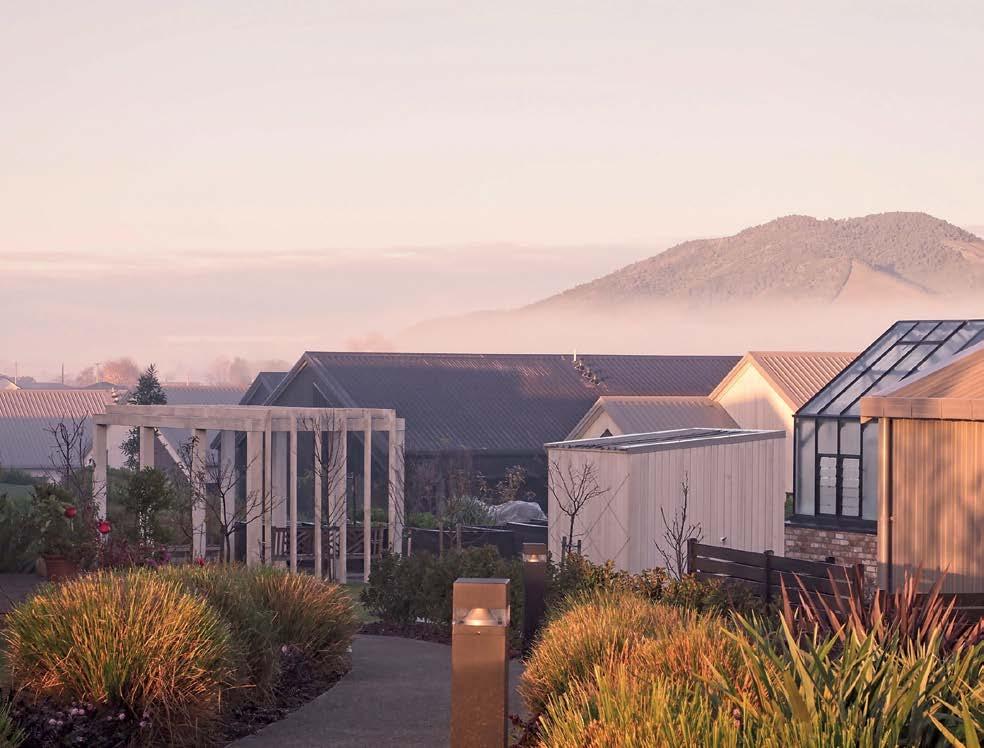

Visit our August Open Days for a chance to win a $200 Mitre 10 voucher!

Thursday 21, Friday 22 & Saturday 23 August, 10am – 2pm. Arvida Whai Mauri Ora, 319 Manaia Road, Te Awamutu.
There’s something stunning nestled in the heart of Te Awamutu – and we can’t wait to share it with you this August. Join us for our Open Days and soak up the beautiful surrounds, as you tour our modern villas and established gardens. After your stroll, settle in for a coffee and cake, on us.
Better still, every group aged 65+ who attends our Open Days or books a tour in August will go in the draw to win a $200 Mitre10 voucher.
Whether you’re seeking space, serenity, or a vibrant retirement community to call home, you’ll find it all at Arvida Whai Mauri Ora. We can’t wait to welcome you.
For more information, call Juliet on 07 444 4023 or scan the QR code.





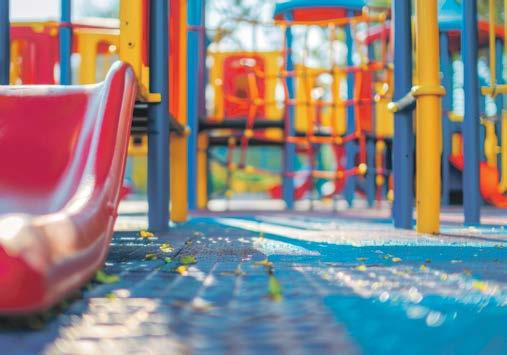

Brian Knutson rewarded
By Viv Posselt
Founding member of the Waipā Holstein Friesian Club, Brian Knutson, is tickled pink with the honorary life membership award bestowed on him at the club’s recent 50th jubilee celebrations.
strengths and/or weaknesses for a national database.
Understanding Out-of-Zone Out-of-Zone enrolment policies enrolment

The process of enrolling children in schools outside their designated home zones is often of considerable importance for families seeking the best educational opportunities for their children.
The Ministry of Education (MOE) has a set of criteria to manage out-of-zone applications to ensure fairness, prevent overcrowding, and maintain equitable access to quality education.
School zones are geographic areas assigned to specific schools to manage student populations. Children who live within this zone are generally entitled to automatic enrolment at the corresponding school. Zoning helps prevent the overpopulation of popular schools and ensures that all children have access to education close to home. When a school's roll is not full after enrolling all in-zone students, the MOE permits the school to accept additional students from outside the designated zone. The MOE requires these places be allocated using a fair and transparent ballot (lottery) process. This system is used to prevent any potential bias and ensures all applicants are given an equal opportunity, based on the school’s capacity.
The MOE has a clear hierarchy of priority groups to determine which out-

of-zone applicants are considered first during the ballot. The typical priority order is as follows:
• Priority 1: Applicants who are siblings of current students.
• Priority 2: Applicants who are siblings of former students.
• Priority 3: Applicants who are children of former students.
• Priority 4: Applicants who are children of school staff or board members.
• Priority 5: All other applicants. If the number of applicants in a priority group exceeds the available spaces, a ballot is conducted among that group alone.
Schools must clearly communicate their out-of-zone enrolment process, including application deadlines, ballot dates, and notification procedures. The MOE requires scahools to publish this information on their websites and in community notices to ensure families are fully informed.
The process ensures that family connections to a school are recognised while still providing opportunities for new families.

2026 Enrolments
The retired farmer, who became the then youngest president of the New Zealand Holstein Friesian Association (NZHFA) in 1987-8 and later received honorary life membership to that association, has placed his new certificate among a slew of other awards displayed in his Ōtorohanga home.
“You feel very proud to have been honoured in this way,” Knutson, now 82, said. “It does mean a lot, even after all these years.”
The collection recognises a lifetime’s work in the industry, covering his years farming, breeding, showing and judging Friesians, and his extensive work as a classifier, which saw him travel the length and breadth of the country.
He became NZHFA’s second patron after Canterbury’s John Grigg - the first person to import and breed Holstein Friesian cattle into New Zealand. One of his first jobs in that capacity was to declare the Holstein Friesian New Zealand 2010 centenary open. He represented the national association twice on visits to the United States.
Knutson also spent time as chairman of the NZ Dairy Breeds Federation, sitting on the Dairy Breeds Advisory Committee. In 1992, he was given a NZHFA Special Service Award for his 25 years’ service to the TOP (Traits Other than Production) scheme, acknowledging the part he played in establishing the classification scheme that uses a linear system to score each animal’s
The Knutson name has strong links to New Zealand’s Holstein Friesians. Brian’s father Cedric followed his own father’s tracks and went on to establish the highlyregarded Turepo stud, first in the Wairarapa and then at Kio Kio. Brian and his brother Ross purchased their father’s 80ha farm in the 1960s, milking 160-180 cows, but following rapid growth, Brian and his wife Val struck out on their own and Ranui Stud on Old Te Kuiti Rd in the early ‘70s was founded on bloodlines from his father’s Turepo herd. At its peak, and after Brian had purchased two neighbouring properties, Ranui had around 260 Friesians.
The long line of Knutson men started early, showing calves in local show rings as youngsters, learning from the best, and going on to breed a string of champions. All of them were deeply involved in the administration side of the industry. Ten years ago, and with none of his three sons eager to go farming, Brian gave up the farm and retired fully.
Over 100 guests from around the country attended the Waipā Holstein Friesian Club’s 50th jubilee and Taranaki-King Country MP Barbara Kuriger and NZHFA president Owen Copinga delivered addresses. Longstanding member Sue Blackler presented Brian Knutson with his award, outlining his ‘dedication and untiring work promoting Holstein Friesians, both within the club and nationally’.
Club patron Colleen Craig said: “A halfcentury is a long time in anyone’s language, and Waipā Holstein Friesian Club’s achievement of this auspicious milestone called for a worthy celebration.”
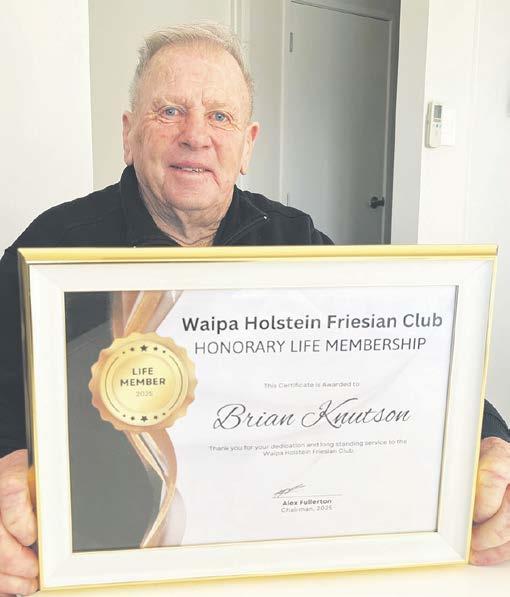
Brian Knutson with the lifetime membership award presented to him at the recent 50th jubilee of the Waipā Holstein Friesian Club. Photo: Viv Posselt



Summerset Cambridge Open Weekend

Summerset Cambridge offers a relaxing and low-maintenance lifestyle in a vibrant and growing village. The grand village centre is well underway and once complete at the end of 2025, will offer a range of fantastic facilities for you to enjoy, from an indoor pool to a cafe and residents’ bar.
Located within the village centre, our serviced apartments are now selling off plans and offer the perfect balance between independent living and support on hand. The stunning new serviced apartment show homes are open to tour too.
We know that moving to a retirement village is a big decision. So why not come along to our Open Weekend on 23 & 24 August. See for yourself why our residents love the Summerset life.
Love the life you choose.
Open Weekend
Saturday 23 & Sunday 24 August, 10am - 2pm
Tractor pull draws crowd
By Jon Rawlinson
Ōhaupō’s Reymer family was revved and riding high at the Ōtorohanga Tractor Pull this month.
Dan Reymer won the 1012 tonne class and secured overall honours, and his uncles, Andrew and Bill Reymer balanced out the podium, placing second and third in the pre-1990s class.
Dan’s father, Stephen Reymer, is also well known in the sport.
Competition organiser Ōtorohanga’s Ben Ferguson
said conditions were near perfect on the day.
“The night before, it was terrible. It was raining, so I was worried that we might have to cancel or postpone the event. Although there was a bit of a cold chill on the Saturday, it turned out to be beautiful.”
Some spectators might prefer to see such mighty machines flex their muscles by dragging heavy sleds in the muck, but dry ground is usually preferred by competitors. Conditions also influence which tractors –
size and type – will have the right amount of pulling power.
“You don’t want it to be too muddy because it becomes a headache as the sleds pack up with mud. A nice, hard track is what we’re after,” Ferguson said.
“The drivers have to control their tractors, but every day’s different, every hour’s different, so you never know who’ll come out on top.”
The clear skies also attracted plenty of spectators.

“I’m not sure of the numbers, but we definitely had a massive turnout this time, the best we’ve had,” said Ferguson.
Entrants competed in classes mostly based on weight, with tractors ranging from up-to-seven tonnes to 14-16 tonne titans.
The tractors on show at the private farmland venue on Otewa Road included such makes as New Holland, John Deere, Fendt, Massey Ferguson and more.
Ferguson placed third in the 14-16 tonne class, driving a Case IH.
This year’s class winners were: 0-7 tonnes Brae Metcalfe, 7-8.5 tonnes Shawn Luxton, 8.5-10 tonnes Calvin Smith, 10-12 tonnes Daniel Reymer, 12-14 tonnes Simon Swan, 14-16 tonnes Michael Ritch, Diesel modified Neil Timmins, Petrol modified Wally Sinton, Pre 1990s Jordon Sinton.

Driving Cour se
drivers

Date:
The overall winner was Daniel Reymer.
Photo - Allan Hay Photography

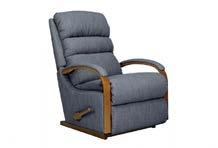
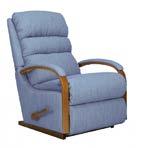












Karāpiro is reunited
By Mary Anne Gill
John Kennedy is in awe of the people who, more than 75 years ago, designed and built hydro dams on the Waikato River.
At a Karāpiro community celebration last week dam operator Mercury Energy announced Ariki Road –which runs over the dam itself – would reopen permanently this week after closing off and on since August 2022.
It marks the near completion of the $90 million upgrade to the Karāpiro hydro power station, a facility designed before World War II, built during the war, and
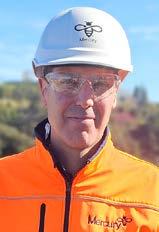
commissioned in 1947.
The third and final new power generator is now in place, boosting output enough to power an additional 63,000 homes. With the upgrade, Karāpiro now generates more electricity from the same volume of water.
“Efficiency is way up,” says Kennedy, who lives in Newstead and is Mercury’s Hydro Rehabilitation Programme Manager.
This was his first project for Mercury, and he described it as a “once-in-ageneration” job.
“It’ll be my grandchildren that take these machines out next time, or even my great grandchildren. It won’t be my children because this will run for 50 years,” he said.
“It’s amazing. Some of the stuff that we took to scrap has worked tirelessly through this time and when you think everything back then was done on paper, no calculators, it was all done in a design office somewhere with slide rulers and drawings. It would take months to ship across the world with design changes.
“What they delivered
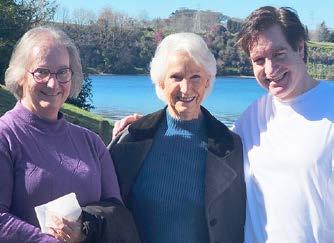
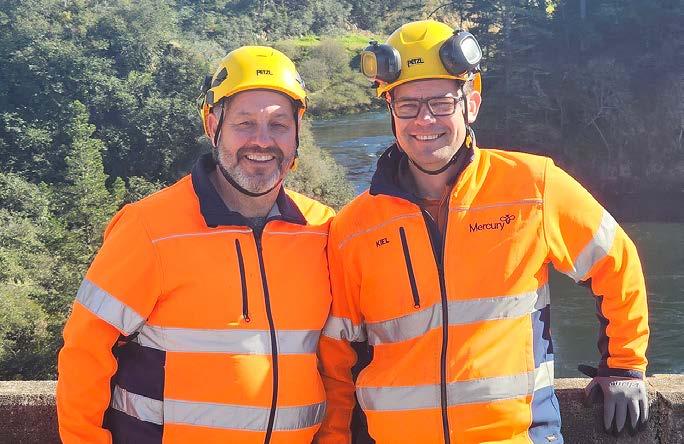
back in those days is quite astounding really and the fact it has been reliably around for 75 years means it was well designed and wellengineered.”
For every litre of water that goes through Karapiro, the plant now generates three percent more power.
Kennedy’s favourite hydro station of Mercury’s nine on the Waikato River is Karāpiro.
“This was the project that brought me to Mercury and this is the one I’ve been invested in for the last three years.”
Karāpiro-Arapuni site lead Kiel Adlam also has a lifetime invested in the hydro industry – as does his father Magnus, who last year celebrated 40 years with the company.
Born in Hamilton, Adlam
moved to Arapuni at age two when his father took a job there. He’s now Mercury’s Operation Readiness Coordinator.
“He’s still here, still telling me I’m doing it wrong,” said Adlam, who now lives in Cambridge.
The best part of the Karāpiro project has been the learnings on the way.
“We learned a lot of things on the first unit and now the third one. I’d like to think we’re in a much better place now.”
Both men now move onto Maraetai - where all its turbines, generators and governors will be replaced - followed by Ātiamuri and Ōhakuri, projects that will keep Mercury busy for years to come.
Mercury chief executive Stew Hamilton has been with
the company four years, the last as CEO.
It was his 50th birthday the day of the community celebration and what a way to celebrate.
Although born in Auckland, Hamilton grew up in South Island communities where operations similar to the Karāpiro one had a big impact on people’s lives.
“I recognise that over the last few years there has been a life light between two sides of the community (here).”
His announcement that the road would reopen this week was received warmly by staff from Mighty River Domain on Lake Karāpiro, and by locals like mother and daughter Hilma Gill and Debbie Alexander, who can now leave the village and visit the café on the other side of the lake.
“I’m in awe of the people who created this infrastructure that set New Zealand up for 70 plus years,” said Hamilton.
“We need to think seriously about how we’re setting New Zealand up for the next 50.”
The biggest change seems deceptively simple, he said.
“I was walking through the plant just now and if you were there three years ago, there was shaking and vibrating. There was nothing like that. It’s nice and smooth.”
Naming a favourite power station, he said, is like naming a favourite child.
“They’ve all got something but I think this is special for a lot of New Zealanders because they come to Karāpiro lake for all that happens on there.”
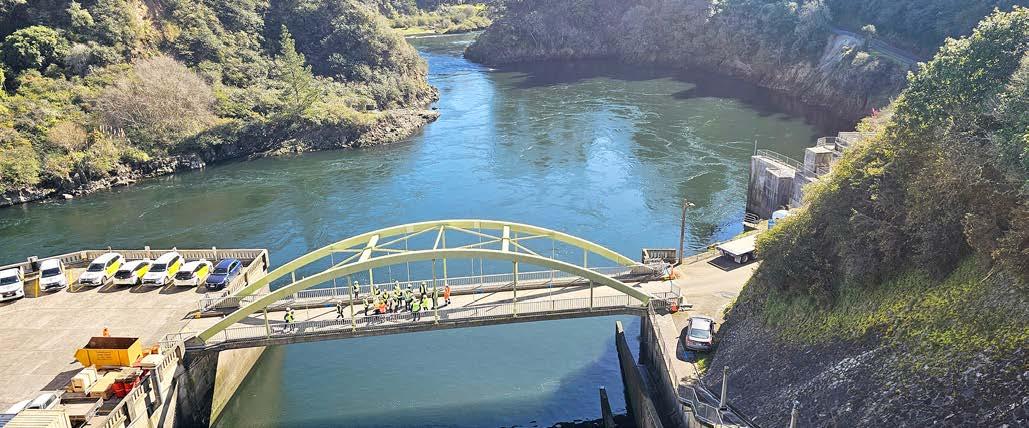
Mercury NZ Hydro Rehab project manager John Kennedy left and site leader Kiel Adlam on top of Karāpiro Dam.
Photo: Mary Anne Gill
Celebrating the road opening, from left Debbie Alexander, mother Hilma Gill and brother Richie Gill. Photo: Mary Anne Gill
One of the community tours gathers on the bridge at Karāpiro Dam on the Waikato River.
Photo: Mary Anne Gill
Stew Hamilton
Record entries for tribal festival
By Chris Gardner
The home of the Tainui waka anchor stone will showcase the diversity and vibrancy of Maniapoto hapu at the largest Te Nehenehenui Tribal Festival since the event began in 2014.
Tainui Wētere Domain in Mōkau will host the second event since the pandemic enforced break on September 12 and 13.
“Everybody is really excited,” said festival secretary Hariru Roa.
“It’s wonderful to be able to hold an event at this end of our territory.”
The festival has attracted an average of nine haka teams from schools, marae and hapu across Te Nehenehenui, but this year the event has attracted 17 teams.
New teams joining the lineup are Te Kura o Ōtorohanga, Te Tuhinga from Mōkau led by Sean and Moana Hamana, Pūāwhe led by Arana and Meti Hughes, Te Whare Haka o Rereahu led by Layelin and Stella Stewart, and Ngārauwharawhara o Te Korapatū from Hangatiki led
by Ashleigh Papa. Oparure Marae group
Ngā Tapuwae o Kinohaku will return for its third appearance, highlighting an ongoing commitment to the event and its purpose.
The festival consists of three main sections— Karanga Tamariki (Junior), Karanga Rangatahi (Intermediate), and Karanga Pakeke (Open Senior).
Kapa (teams) compete in four key disciplines: Karanga (ceremonial call), Whaikōrero (oratory), Haka Pōwhiri (ceremonial welcome chant), and Waiata Tawhito (traditional chant). This approach contributes to the growth of tribal practitioners and leaders for the future.
Roa said the event was an expression of collective spirit, with participants attending from across the region, including Hamilton.
“The festival is recognised as a chance to strengthen kapahaka, uphold tikanga, and build identity and leadership at the heart of the tribal community”, Roa said. The theme of this year’s event focuses on the protection and preservation
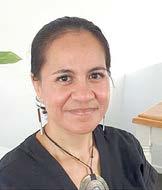
of customary practises along the Mōkau coastline. In conjunction with kapahaka performances, spectators and supporters can expect to enjoy traditional and modern cuisine from local stalls, sharing in the cultural identity of Mōkau and wider Te Nehenehenui.
“Through the art of karanga, whaikōrero, haka pōwhiri, and waiata tawhito, participants honour their tūpuna (ancestors) and inadvertently assume the role of protecting the practises of the iwi for future generations,” Roa said.
Roa said the event was not only for Māori, but their friends and neighbours from across the territory.

Masters riders defy age
The term Mamil - Middle-Aged Man in Lycra - was coined by marketing gurus 15 years ago.
Over the weekend, the Grassroots Cambridge Velodrome was full of them - and their female counterparts - at the Masters Track Cycling Carnival.
More than 60 riders aged 30 and over competed in over 100 events, having travelled from around New Zealand and even across the Tasman to take part. The competition was fierce and friendly, with athletes going head-to-head in the Sprint Cup, Endurance Cup, Omnium Cup, and thrilling Team Pursuit, Team Sprint, and Family Sprint showdowns.
Cycling proved itself a sport for all ages, none more so than in the Family Sprint, where Tim and Penny Pawson claimed victory. Penny, who represented New Zealand in road cycling at the turn of the century, married Tim, a Commonwealth Games bronze medallist. Their shared passion led them to compete together at the World Masters Games in Auckland in 2018 - and they haven’t looked back. Penny has since become a world champion in her age group on the track.
The carnival featured a mix of high-speed sprints and tactical endurance races, showcasing the depth of talent and experience among the competitors. Among the standouts was Auckland’s Colin Claxton, racing in the 70–74 age group. A two-time world champion, Colin teamed up with his wife Denise under the whimsical team name Jurassic Park, proving that age is no barrier to speed - or fun.
Request made
On the Radar, a newsletter produced by Waipā’s communications team to replace the staff reports contained in council agendas until late last year, is onto its 15th version and The News has yet to see a copy of it despite being told we would be able to access the information. We are required to lodge Local Government Official Information and Meetings Act (LGOIMA) requests. The information being held back from immediate release to the public includes details of building and resource consents.
Flying high
Waipā based members of the Waitomo Aero Club were to the fore during competitions in the 2024-25 season. Paul Grayson, Geoff Peake, Chase Good, Lindsay Smit and Jason Inness (Te Awamutu) and Ross Weinberg were among the top three in various classes announced earlier this month.
Reserve plans
The 30-year-old Hiskens Reserve playground in Te Awamutu is to get a spruce up next month. It is the only playground within a 20-minute walk of the area, which is home to more children than any other part of the Waipā district.








Olivia and Chris Auld of the Auld Alliance line up in the Family Team Sprint. Photo: Mary Anne Gill
Hariru Roa
CountryLife
Feds want reinforcements
By Chris Gardner
Federated Farmers is urging the Environmental Protection Authority to fast track the assessment of new treatments to fight New Zealand’s biggest agricultural pest. Native scarab beetle costelytra giveni, commonly known as native grass grub, costs the agricultural sector $585 million a year as larvae chew through pasture roots causing turf to lift like carpet.
Federated Farmers biosecurity spokesman David Birkett is worried that cost, comprising $380 million on dairy farms and $205 million on sheep and beef farms and probably much more, will blow out.
The EPA has banned the use of the two most effective treatments. Farmers must stop using Chlorpyrifos by January 2027 and Diazanon by July 2028.
Birkett urged the authority to take urgent action to help plug the looming gap.
“This is our biggest agricultural pest by a country mile, yet there’s a real risk farmers’ arsenal to fight it will soon be empty,”
Canterbury cropping farmer Birkett said.
“It’s pleasing that manufacturers have work developing new chemicals underway.”
AgResearch is leading the charge to replace Chlorpyrifos and Diazanon with a bacterium called Serratia proteamaculans proven to infect and kill larvae of both native grass grub and mānuka beetle.
“We also need the Environmental Protection Authority to prioritise and fast-track their assessment of any new options,” Birkett said.
“Stocks of Chlorpyrifos are already very limited and in the face of bans,
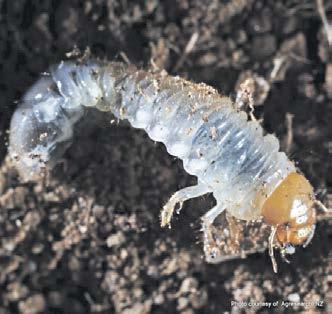
manufacturers are taking it out of production.”
“We’d really like to see them accelerate that development work,” Birkett said.
“It would be disastrous for food production and our agricultural exports if our farmers are left high and dry for any period without an effective control method.”
Birkett said the EPA also needs to play its role swiftly.
“Federated Farmers has been critical of the EPA’s failure to get on top of a backlog of assessment applications for agrichemicals and animal health treatments.
“We’ve welcomed Government announcements on new measures aimed at streamlining assessment processes, particularly in cases where chemicals are already being used safety in other countries.
“But the EPA also needs
to adjust its priorities and not focus on assessing generic chemicals that are already available,” he said.
“Their work stream needs to take better account of how far off approvals are for effective replacement products, including biosecurity and pest increase issues, and how much delays would cost the country.
“The new chemicals that offer the greatest economic benefits should get priority in the queue - and I would put any new treatment for grass grub in that category,” Birkett said.
Te Pahu dairy farmer John Bluett agreed farmers needed an alternative to Chlorpyrifos and Diazanon.
“Over the years we have seen a little bit of native grass grub, but black beetle and cut worm have done more damage in the Waikato.”
Both of the treatments
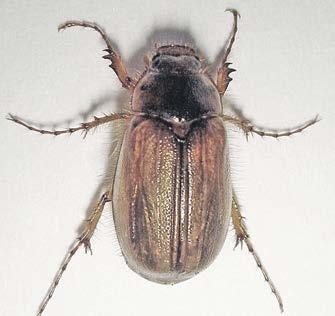

being phased can also be used on other insects.
Higher stocked dairy farms saw less of a problem, he said.
“The higher the stocking rate, the more likely native grass grub gets squashed in the soil,” he said.
Foundation for Arable Research arable and biosecurity and industry relationships officer Ash Mills said grass grub tended to be a pest that would be more noticeably impactful every four or five years in a paddock.
“I can appreciate the production losses adding up over time on properties,” Mills said.
“I agree with the Federated Farmers stance. Without a reliable product to replace Chlorpyrifos and Diazinon, then yes, we should be worried and expect to face even more significant losses in the future.”
Environmental Protection Authority acting manager of hazardous substances applications Shaun Presow said reducing the queue of hazardous substance applications was a top priority.
“We typically treat applications on a first come first serve basis, though it is possible to advance applications where a pressing need is identified,” he said.
“Before doing so however, we need to be sure that taking this action is necessary as it will mean other applications in the queue might have to wait longer.’

“The EPA has several other improvements underway to reduce the queue of hazardous substance applications, including boosting frontline staff and working towards streamlining processes for lower-risk substances. The changes support greater efficiency so that farmers have safer and more effective tools while also protecting people and the environment.”

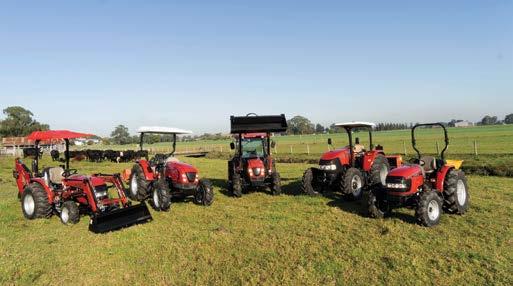

Federated Farmers biosecurity spokesman David Birkett is worried farmers could be left with no way of fighting native grass grub.
Grass grub larvae.
Photo: AgResearch. The grass grub beetle.
Photo: Phil Bendle
Shaun Presow
Just go for it...
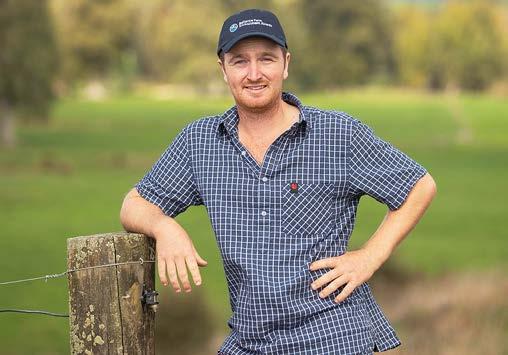
By Chris Gardner
The supreme winner of the Waikato Farm Environment Awards, Tor Pedersen, is urging others to enter next year’s awards.
“Just go for it,” said Pedersen, of Broomore Farm near Raglan.
His family has run a 300-hectare dairy farm on Waitetuna Valley Road since 1967.
“You’ve got nothing to lose and everything to gain. What you can learn from the awards and networking with different people – it’s invaluable.”
The awards, facilitated by the New Zealand Farm Environment Trust, celebrate excellence in sustainable farming and growing.
“The awards are about celebrating progress, not perfection, and sharing ideas across sectors and regions, farmers learning from farmers,” said trust general manager Sarah Harris.
“They are also a great opportunity to reflect on what you’ve achieved, gain feedback for future growth, and connect with like-minded farmers and growers who are passionate about looking after the land for future generations.”
Entries for the next year’s awards are already open and close in October.

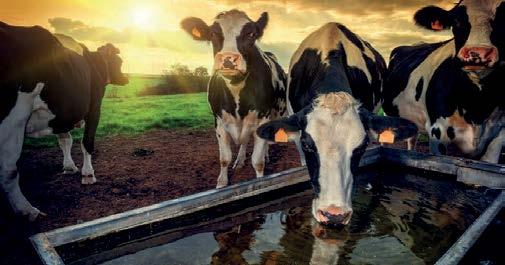


















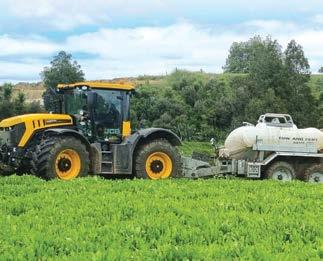


Tor Pedersen says networking with other farmers through the Farm Environment Awards is invaluable.
Designed Filtration Systems for the Removal of Iron and Manganese and Other

Your Will & Probate
When you pass away, your will comes into effect for the administration and distribution of your estate.
Presently, if you own more than $15,000 worth of assets (including but not limited to property, funds in a bank account, investments or superannuation savings like Kiwisaver) the executor(s) named under your will would need to apply to the High Court to obtain a grant of probate.
What is Probate?
“Probate” means “to prove”, derived from the Latin verb “probare” – which is to test or examine. Probate is a document issued by the Court and is the Court’s confirmation that a will is genuine and that the named executor(s) have the authority to distribute assets in accordance with the terms of a will. It provides certainty that an estate is being administered as per the deceased’s wishes. The application for Probate is the first step in an executor’s duties.
New Threshold
From 24 September 2025, the thresholds under sections 65(2) and (5) of the Administration Act 1969 will increase from $15,000 to $40,000. Practically, the effect of the increase to the threshold amounts means that there will be less estates being reduced as a result of court costs and legal fees.

If you have any questions regarding an estate or estate administration, please contact your solicitor to discuss further.
Lucy Sim

Being part of the change
Jayden Corbett was motivated after hearing and reading about whole-farm conversions to carbon forestry.
“It didn’t sit right with me,” he said. “I’m a young guy starting out a career in sheep and beef and heading for the hills but they’re planting out so many of the hills in pine trees.
So Corbett, 22, joined the Waikato Federated Farmers executive at May’s annual meeting.
“I reasoned there was no point just sitting at the dinner table every night and complaining about it.”
At that meeting Corbett found fellow farmers who encouraged him to join in, listen, learn and have a say.
“Federated Farmers took me under their wings, and then president Keith Holmes was keen to see me grow my Feds’ involvement.”
The Waikato branch sponsored Corbett on a one-day leadership workshop that covered topics such as the difference between governance and operational matters, conflict resolution, how to run an effective meeting, and setting values and a strong culture.
“It was excellent,” he said. “I’d got myself into a couple of positions helping at the golf course and the local hall, so it was also quite useful to take those skills back to those smaller community groups.”
Corbett was invited to Wellington to attend a Federated Farmers Meat and Wool Council meeting and, with the value of succession planning in mind, Waikato Meat and Wool chair Reon Verry suggested he might consider becoming his vice chair. And that’s exactly what came about at the province’s annual meeting in May.
Corbett grew up on a small dairy farm at Waerenga, about 20 minutes out of Te Kauwhata.
His granddad was the father figure in the household and while Corbett helped in the cowshed and fed out hay from a young age, his gaze was to the hill country of neighbours’ farms.
“I cottoned on pretty quickly I didn’t want to be a dairy farmer; the early starts weren’t my cup of tea,” Corbett said. “I wanted to be a sheep and beef guy and get off the flats and into the hills.”
At age 14, he knocked at the door of one of those neighbour’s farms and asked about work.
From then his high school holidays and some weekends were taken up with helping in the shearing shed and other farm tasks.
A little bit older and with more experience, he approached another neighbouring farm in the Matahuru
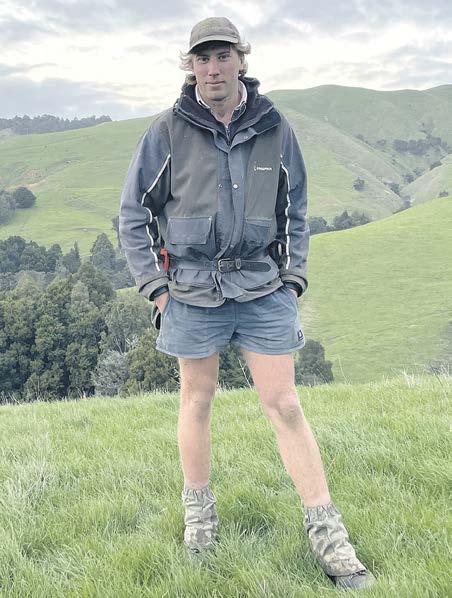
Valley.
“That whole summer I was rolling up fences down in the gullies.”
Seven years later, he’s still on the same property and he’s worked his way up the ranks to be manager.
It’s a 1000-hectare dry stock operation raising beef cattle across multiple properties on LUC 6 and 7 land, some of it pretty steep.
Corbett has two shepherds and a general hand under him.
“My bosses are young. I’m young. We get along and when I’d shown I was up to the tasks, they didn’t let my age get in the way.”
The ultimate aim is owning his own place, so he’s very supportive of the work Federated Farmers has put in to try to secure more competition in the banking sector, and to persuade the Government to allow young farmers access to their KiwiSaver funds to buy a first farm or herd.
As a step up the ownership ladder, he’s leased the family dairy farm and is
taking it to beef for the first time.
“It’s about 100 hectares and me and granddad are working closely together to put it into intensive beef on the flat country.”
Corbett says better KiwiSaver access and a fairer deal from banks could make a big difference to young farmers –and the succession plans of the older generation.
He recalled having his own struggles with banks to secure the lease and stock when he told them he was 21 going on 22.
His own experience is that Federated Farmers welcomes younger members and will find a fulfilling role for them.
“We need a stronger farming voice now more than ever, especially with our district and regional councils.
“Building up some better communications with younger farmers is important and I also think we can reach out more to other groups to see where our interests align.
“I’m keen to be a part of that.”




Sheep and beef farmer Jayden Corbett joined Waikato Federated Farmers’ executive at 22.

with Jan Bilton
Zest for citrus
One of our most recent citrus gems is yuzu. It originated in East Asia and grows wild in Korea and Tibet. However, it is now cultivated in New Zealand and Australia. Yuzu is the most cold-resistant of all the citrus fruits and is about the size of a mandarin with a substantial number of pips and a very tangy flavour.
It is mainly associated with Japan, where its fragrant peel is enjoyed in soups and simmered dishes. The juice is also added to ponzu dipping sauce. Western cooks use the peel and juice to flavour ice creams, desserts and olive oil. Another relatively newbie, the finger lime or citrus caviar, is native to northern Queensland.
These gherkin-sized fruit have flavour bomb pearls that are squeezed from their capsules for use in drinks, savoury dishes (they’re especially good with seafood) and desserts.
Tip: I made little meringues with the leftover egg whites from the Yuzu Flan. Beat together 3 egg whites, a 1/2 cup of caster sugar and a pinch each of salt and cream of tartar, until stiff.
Fold in a 1/4 cup of caster sugar. Pipe petit meringues onto two baking paper-lined oven trays and bake at 120°C for 1 hour until crisp. Cool. Store in an airtight container in the fridge. Makes 75.
Tart Yuzu Flan
Crust: 250g superwine biscuits or similar
1 teaspoon ground ginger
100g butter, melted
Filling: 1/4 cup water
1 tablespoon powdered gelatine
2-3 yuzu
1/4 cup lemon juice
3/4 cup sugar
3 large egg yolks
300ml cream
3 tablespoons icing sugar
Preheat the oven to 180°C. Lightly butter a 20-23cm loosebased flan pan.
Finely crush the biscuits. Place in a bowl. Add the ginger and butter and mix well.

With the base of a glass, press the crumbs firmly onto the base and sides of the flan. Bake for 10 minutes. Cool, then chill.
Place the water in a small bowl. Sprinkle the gelatine on top. Soak for about 5 minutes, until swollen.
Finely grate the rind of 1 yuzu. Squeeze the remaining yuzu to make a 1/3 cup of strained juice.
Whisk together the yuzu and lemon juices, sugar, egg yolks and grated yuzu rind in a double boiler over simmering water, until slightly thickened and warm. Whisk in the softened gelatine until dissolved and smooth. Chill the mixture, stirring occasionally. Transfer to a large bowl.
Whip the cream and icing sugar, until stiff peaks form. Fold 1/4 of the whipped cream into the yuzu filling, until incorporated.
Fold in the remaining cream in 3 additions. Chill, until just beginning to set. Spoon into the crumb crust. Chill. Can be prepared up to 2 days ahead.
I used little meringues using the leftover egg whites from the flan as a garnish. Serves 8.
Whitebait Roulade with Finger Limes
Roulade: 250g whitebait
4 large eggs, separated 1/4 cup cream flaky salt and freshly ground black pepper to taste

6 tablespoons grated parmesan cheese, divided
Filling: 3/4 cup sour cream
2 gherkins, rinsed, drained and finely chopped
2 tablespoons finely chopped chives finely grated rind 1 lemon flaky salt and freshly ground black pepper to taste
Garnish: 4 finger limes
Preheat the oven to 200°C. Grease and line a 33cm x 23cm sponge roll pan with baking paper. Wash and drain the whitebait. Pat dry with a paper towel.
Combine and lightly whisk the egg yolks, cream, salt, pepper and 2 tablespoons of the parmesan cheese. Add the whitebait.
Beat the egg whites until stiff. Fold 2 tablespoons into the whitebait mixture then gently fold in the remaining egg white so the volume is not lost.
Pour into the prepared pan. Bake for 8-10 minutes, until cooked through but still soft. Turn onto a sheet of baking paper that has been lightly dusted with the remaining parmesan cheese. Cool.
Spread with the sour cream. Sprinkle with gherkins, chives, lemon rind, salt and pepper. Carefully roll up from a long side. Cover and refrigerate for up to 1 day.
To serve, cut into 2cm rounds. Garnish with the tangy, ‘caviar-like’ pearls squeezed from the finger limes. Serves 8 as a starter or 4 as a main course.













Tart Yuzu Flan
Whitebait Roulade with Finger Limes
17 Margot Lane, Matangi

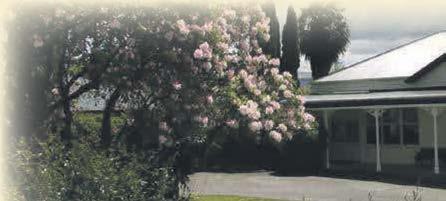
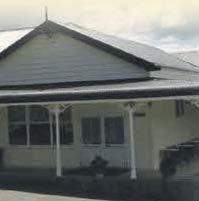




Across 1. Humorous ridicule (6) 4. Bravery (6) 9. Boisterous (5) 10. Dampen (7) 11. Innovator (7) 13. Complaint (colloq)
Across: 1. Spur 4. Survey 8. Conceal 9. Stall 10. Slip 11. Reprieve 13. Near thing 17. Ambulant 19. Clog 21. Magma 22. Unaware 23. Intend 24. Mite. Down: 2. Pension 3. Reel 4. Silver-tongued 5. Restrain 6. Erase 7. Sleek 8. Case 12. Tall tale 14. Gallant 15. Balmy 16. Ogle 18. Begin 20. Calm.
COMFY CARE
Enjoy welcoming, comfy surroundings and a warm sense of belonging at our Resthaven on Burns Care Centre. We are a community charitable trust with a caring team and commitment to quality, affordable care for seniors.
• Our team are here to help you enjoy the life you choose.
• We offer rest home care, continuing (hospital-level) and memory (dementia) care.
• There is no premium daily room charge at Resthaven on Burns.


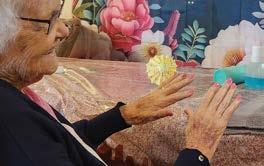

















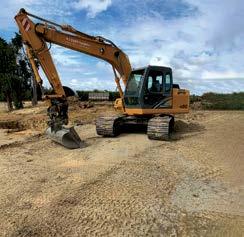











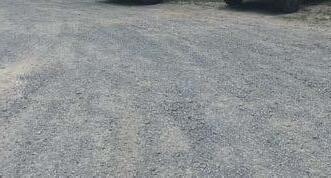


SERVICE TECHNICIANS WANTED WORKSHOP & FIELD BASED HEAVY DIESEL
Join a leading agricultural machinery dealership! Giltrap Agrizone Cambridge are looking for qualified Service Technicians (Heavy Diesel) to join our experienced and high-performing team dealing with tractors & farm machinery. We have a workshop and a field-service role available.
If you’re passionate about agricultural machinery, thrive in a busy environment and enjoy working with industry experts, we want to hear from you!
Mechanical experience with tractors & agricultural machinery is required, as is a methodical approach and ability to problem solve with a customer service focus. What we offer:
• Full time positions
• Vehicle/laptop/phone/on-call & call-out allowances for the Field Service role
• Supportive team culture
• Ongoing training & development
• Competitive remuneration & benefits
If this sounds like you, email your CV to HR@gaz.co.nz or ring Jason Middlemiss for a chat on 027 5554 106

“Local jobs for local people”
Ador Shoes
Winter

You’re invited to… Fonterra Te Awamutu’s Annual Environmental Community Meeting (Manufacturing Site)
Date: Thursday 28 August 2025
Time: 5:00 PM – 6.15 PM
Venue: Learning Centre Fonterra Te Awamutu 1600 Alexandra Street
At the meeting we will:
• Introduce you to members of our site operations team – our Site Manager and Environmental Manager.
• Provide you with an update on our activities and operations.
• Provide an update on our wastewater treatment plant and site environmental performance;
• Share an update from a local Sustainable Dairy Advisor on activities happening in local catchments
This is your chance to ask questions and share any thoughts or feedback. Light refreshments will be provided. Please bring along your family and friends!
Please RSVP to our Environmental Manager Caitlyn Poole by texting 027 275 6157 or by email: Caitlyn.poole@ fonterra.com
Quinn makes Waikato debut
By Jesse Wood
Making a Waikato debut is a highlight - it’s even better when it comes in a 36-35 win over neighbours Auckland.
That was the story for Ōtorohanga born prop Taipari Quinnat the start of the month when he featured in Waikato’s NPC win at Eden Park.
Quinn, 22, is a fifth generation Ōtorohanga resident. He attended Ōtorohanga Primary School and college before starting an apprenticeship at Action Electrical Te Kūiti.
His workplace has been very supportive of his rugby journey.
Workmates echoed each other’s remarks, they missed seeing his bubbly face every morning but were proud of him progressing in his rugby career.
At rugby and at work, Taipari is a team player.
Rugby means a lot to him and he’s sure to add his bubbliness to the Waikato team that he brings to the Action Electrical team every day. It’s been a whirlwind few weeks for Taipari.
He came off the bench, donning the number 17 jersey in the Stan Thomas Memorial Shield victory – celebrating 50 years of the trophy and 100 years after Thomas made his first
TEMPORARY ROAD CLOSURE
State Highway 39 (Franklin Street, Pirongia. Between side roads Beechy Street and Ballot Street, Sunday, 21st September 2025 6am - 4pm for Annual Pirongia Craft Day. Detours will be in place.
Authorised by Alliance Services

appearance for Waikato.
After spending time at Ōtorohanga Sports and Te Awamutu Sports rugby clubs, Taipari made the move into the big smoke of Hamilton this season, joining Fraser Tech.
There he has been mentored by the likes of former Waikato, Chiefs and Fiji front-rower Greg Smith. Fraser Tech were defeated 21-20 by Hamilton Marist in the semi-finals, but that didn’t put a dampener on Taipari’s year. He was selected in the New Zealand Harlequins team (Waikato B).
Waikato head coach Ross Fillipo then called him saying, “can you come up to Hamilton for training tomorrow? We want to see how you go.”
Taipari impressed at training and was asked to stay on in the NPC environment.
He played a pre-season fixture in the red, yellow and black jersey against Hawke’s Bay in Taupō on July 25.
The following Wednesday, he was named for the round one clash in Auckland.
Taipari became the 1266th Waikato representative, debuting alongside 34-yearold former All Black Lima Sopoaga as well as fellow Fraser Tech clubmate Liam Anderson and Hautapu’s Rui Farrant.

“It meant the world to make my family, my fiancée and my friends proud,”
Taipari said. “It was a feeling like no other running out onto that field, especially on debut.
“The nerves were high but I’m just super grateful that I got a crack.”
Mum Katrina Prescott Quinn said they were extremely proud to see Taipari wear the Waikato colours.
Dad Lukas Quinn had played for Ōtorohanga, Waikato Māori and North Island Māori teams back in his day.
“It’s been Taipari’s dream
since he was little to get up to NPC level or higher. We’re proud,” Katrina said.
“He played rugby at primary school and then had a break. Then he started playing again for the Ōtorohanga club after college. His grandfather Robert Prescott played rugby and played the same position too.
“Taipari has done most of the hard work himself and made some good friends along the way that keep him grounded and help him with his training.
“The whole family is rapt that he’s starting to be able to achieve his dreams.”

Taipari Quinn dons the Waikato kit.
Photo: Waikato Rugby
HATWELL, John Leonard










2008 BLACK MITSUBISHI DELICA for sale – D5 Van, eight-seater, two x fourwheel drive, 12-month WOF, new tyres, brake pads, towbar $8500. Ph 027 9556243
PIRONGIA TOPIARY
– Passed away suddenly at home on 9th August 2025, aged 85 years. Dearly loved husband of the late Joyce. Stepfather to Sheryle, Mervyn, and Vicki. Grandfather to eight and great grandfather to five. Loved brother. A private cremation has taken place. All communications to the Hatwell family, PO Box 137, Te Awamutu 3840.
Te Awamutu Funeral Services, FDANZ


Notice of Public Annual Meeting of Beneficiaries
Availability of the 2025 Chairperson’s Annual Report, Financial Statements, 2025-26 Annual Plan, and Waipā Networks Ltd Statement of Corporate Intent.
I hereby give notice that on Friday the 29th of August 2025, commencing at 10.00am, a Public Annual Meeting of Beneficiaries (Connected Consumers) will be held at Waipā Networks, 240 Harrison Drive, Te Awamutu.
At the meeting the Trustees will report on:
• The operation of Waipā Networks Trust for the year ended 31 March 2025.
• The Financial Statements of Waipā Networks Trust for the year ended 31 March 2025.
• The performance of Waipā Networks Limited for the year ended 31 March 2025.
• The compliance of Waipā Networks Limited with its Statement of Corporate Intent for the year ended 31 March 2025.
• The Annual Plan 2025/26 of Waipā Networks Trust.
At the meeting the Beneficiaries will be given the opportunity to:
• Appoint the Auditor for Waipā Networks Trust for the 2026 financial year.
• Speak on all matters being considered at the Annual Meeting.
Please note that the above named documents are available for public inspection on the Trust website or at the offices of Waipā Networks Limited at 240 Harrison Drive, Te Awamutu during ordinary business hours.
K M Heeringa - Trust Manager
SITUATIONS VACANT
CLEANER REQUIRED - for commercial and domestic with own transport and valid license. Contact sharmaladyssa@gmail.com or ph 021 732 609
Live In House Keeper Required
For Outstanding Rural Property in Matamata Please Call 022 029 4740 For more information

344 449




HARE, Betty Loraine (nee Bosher) – Passed away peacefully at San Michele, Te Awamutu on Tuesday, 5th August 2025, aged 97 years. Much loved wife of the late Jack. Loving mother and mother-in-law of John & Rhonda, Rod, Graham & Jan, and Peter. Cherished nana of all her grandchildren and great grandchildren. Very special thanks for the loving care shown to Betty by staff at San Michele and Camellia Rest Home, Te Awamutu. A celebration of Betty’s life has taken place. All communications to the Hare family, PO Box 137, Te Awamutu 3840.
Te Awamutu Funeral Services, FDANZ
STEEL, Norma Mary (nee Ross) – Passed away peacefully on 9th August 2025, aged 100 at Waikato Hospital after a short illness. Loving wife of the late Bill. Loving mother and motherin-law of Gary & Judith, Lynley & the late Barrie Sager. Much loved Narn of Angela (dec), Nicola, Andrew, Michael (dec) and Jarrod. Loved Narn of her seven great grandchildren. As per Norma’s wishes a private cremation has been held. All communications to the Steel family, PO Box 137, Te Awamutu 3840.
Te Awamutu Funeral Services, FDANZ
Family Notices
ANDERSON, Dorothy Vera (Dot) – Passed away peacefully at Hillview, Te Kuiti, on 9th August 2025, aged 91 years. Loved wife of the late Barry Anderson. Mother of Sharon, Wayne and families. A special thank you to all the staff at Hillview for the exceptional care of Dot. A service for Dot will be held at Alexandra House Chapel, 570 Alexandra St, Te Awamutu on Saturday, 23rd August at 1:00 pm. All communications to the Anderson family, PO Box 137, Te Awamutu 3840.
Te Awamutu Funeral Services, FDANZ
ARMSTRONG, Shirley Ellie (nee Bird) – Passed away peacefully at Bethlehem Views, Tauranga on Tuesday August 12, 2025, nine days short of her 92nd birthday. Dearly loved wife of the late Don. Loving mother and mother-in-law of the late Gary and Christina, Paul and Robyn, Bryce and Leanne, Luke and Lisa. Adored Nana Shirley of all her grandchildren and great grandchildren. Very special thanks to Maylon House Mount Maunganui and Bethlehem Views staff for the loving care shown to Shirley. A celebration of Shirley’s life will take place at Alexandra House Chapel, 570 Alexandra St, Te Awamutu on Wednesday, August 27 at 1pm. All communications to the Armstrong family, PO Box 137, Te Awamutu 3840.
Te Awamutu Funeral Services, FDANZ



PARISH OF ST JOHN
Sunday 31st August
One morning service only at St Saviours Pirongia.
No morning service at St John’s or OSJ.

CONTACT GOOD SPEED CONSTRUCTION for all your building and project needs. No job to big or small. One call does it all. Call Ross 021 063 2268
Evensong: 4.30pm at OSJ followed by RSA fellowship meal.


BEAVER, Philip (John) – 4 July 1949 - 9 August 2025. After an illness he passed away. Loving husband to Fay. Father to Marie and Richard. Grandfather to six grandchildren and great grandfather to seven. He will be sadly missed by all. Revelation 21:4. A memorial service will be held at the Kingdom Hall of Jehovah’s Witnesses, 2096 Alexandra Street, Te Awamutu on Friday 22 August at 1pm. All communications to the Cooper family, 202 Airfield Road R.D 2, Takanini, 2582.
Te Awamutu Funeral Services, FDANZ
IN MEMORIAM
TUTTY, Linda Mary
Three years have passed since you left us on 20th August 2022, our very special wife, mother and nana, Linda. Your love remains constant in our hearts, a light that will never fade but will continue to guide us into the future. “Forever in our thoughts.” Colin, Karl, Aaron, Shaun, and families.

























